Top 28 Colleges with No Out-of-State Tuition [2024 Guide]
US Colleges that Don't Charge Out of State Tuition

Find your perfect value college
Failing to research and identify the cheapest out-of-state tuition options can lead to unnecessary financial burdens, limiting access to desired academic programs, and potentially hindering educational opportunities. By exploring colleges that offer affordable tuition rates, students can broaden their horizons and pursue their academic goals without the added stress of excessive costs.
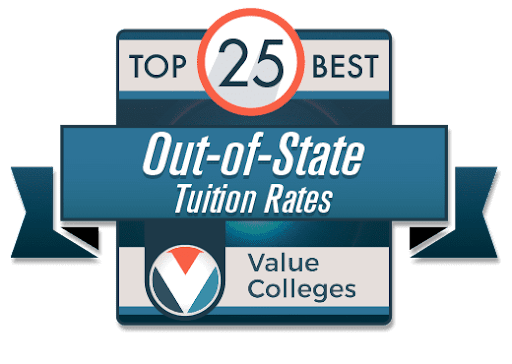
Featured Programs With the Cheapest Out-of-State Tuition
The best value schools for out-of-state students include Florida Polytechnic University, Southern Louisiana University-New Orleans, Oklahoma Panhandle State University, Lake Area Technical College-Watertown, and Mississippi Valley State University.
Featured Programs
These institutions provide valuable insights into institutions that prioritize accessibility and affordability without compromising on academic quality.
| Institution | Average Out-of-State Tuition Fee | Acceptance Rate |
| Florida Polytechnic University | $21,005 | 38% |
| Southern Louisiana University | $20,851 | 56% |
| Oklahoma Panhandle State University | $8,385 | 90% |
| Lake Area Technical College | $6,718 | 85% |
| Mississippi Valley State University | $7,414 | 79% |
| Blue Ridge Community and Technical College | $7,464 | 92% |
| University of Texas of the Permian Basin | $21,747 | 95% |
| Minot State University | $8,508 | 93% |
| Delta State University | $8,600 | 98% |
| Alcorn State University | $8,500 | 30% |
| Chadron State College | $7,800 | 100% |
| Peru State College | $7,920 | 48% |
| Central State University | $9,590 | 88% |
| Granite State College | $9,150 | 96% |
| Southwest Minnesota State University | $10,122 | 91% |
| Bemidji State University | $10,130 | 77% |
| Youngstown State University | $10,838 | 78% |
| Nicholls State University | $9,249 | 98% |
| Mayville State University | $11,131 | 61% |
| West Texas A&M University | $10,996 | 91% |
| Dickinson State University | $11,218 | 72% |
| New Mexico Highlands University | $11,900 | 97% |
| Thomas Edison State University | $9,500 | 100% |
| Harris-Stowe State University | $10,600 | 17% |
| Henderson State University | $9,760 | 75% |
| University of Southern Mississippi | $11,450 | 98% |
| Midwestern State University | $12,183 | 92% |
| Black Hills State University | $12,100 | 96% |
The high cost of tuition is one of the primary barriers to many students considering a college degree, especially when it comes to out-of-state tuition. Going out of state for a degree is not a luxury but a necessity. Perhaps the only universities that offer a degree in a specialty you want are out of state. Maybe getting out on your own, in a new state, is the change you need to be the best version of yourself.
The US has some of the cheapest educational institutions in the world – our public universities, especially regional public institutions, offer students in their state affordable, accessible education opportunities as an explicit mission. Unfortunately, most of them charge higher rates for out-of-state tuition.
ValueColleges.com is an advertising-supported site. Featured or trusted partner programs and all school search, finder, or match results are for schools that compensate us. This compensation does not influence our school rankings, resource guides, or other editorially-independent information published on this site.
1. Florida Polytechnic University
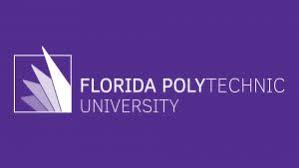
Florida Polytechnic University has a unique mission to drive Florida’s future forward, and making itself one of the low-cost universities in the nation is a key part of that mission.
Providing students with the same tuition rate as in-state residents means that Florida Poly can attract the most promising, motivated, and accomplished students from all over the nation.
That means Florida Poly’s world-class STEM programs can attract a world-class student body. What tech-loving student would not be attracted to state-of-the-art labs, mentorship from award-winning faculty, and the world’s first all-digital library?
Florida Polytechnic is the newest member of the State University System of Florida. Founded in 2012, Florida Poly only accepted its first full class of freshmen in 2014 (though Florida Poly dates back to a University of South Florida extension campus started in 1988). Florida Poly is entirely STEM-focused, filling a significant role in Florida’s public college education.
It’s one of the most ambitious new universities in the nation, with a mandate from the governor to increase Florida’s production of STEM grads to over 22,500 per year by 2025. Setting an affordable tuition rate in the nation is a smart strategy and a major benefit for students.
2. Southern Louisiana University

The public, historically black Southern University at New Orleans enjoys offering top-notch instruction, academic programs, and research to support the upward mobility of a diverse student body.
The College of Education and Human Development, the College of Business and Public Administration, and the School of Social Work of SUNO are the institutions that provide undergraduate programs at Southern University.
SUNO, a leading, innovative university, is committed to assisting its students in achieving more tremendous success in their chosen fields by providing unparalleled attention and individualized instruction.
Among the prominent academic disciplines are natural science, business management, child development, and teacher education. The courses from Southern University provide several benefits, including improved critical thinking skills and first-hand experience with highly qualified professors.
3. Oklahoma Panhandle State University

The Oklahoma Panhandle State University’s affordable tuition is part of its mission to empower students to reach for lifelong aspirations. Their values embrace excellence, inclusion, integrity, sustainability, and service.
OPSU offers some of the most affordable higher learning options on campus and or online. Such schools reach for excellence in life-long learning, resource optimization, and graduate production.
Students have the option to apply for student loans, grants, and scholarships, including the Panhandle Promise Scholarship. The Oklahoma Legislature established the Oklahoma Panhandle in 1909.
The school participates in the Board of Regents for the Oklahoma Agricultural & Mechanical Colleges’ “EthicsPoint” program to reach for the highest ethical standards for those attending Oklahoma Panhandle . Franklin Hall, located on OPSU’s campus is recognized under the U.S. National Register of Historic Places.
4. Lake Area Technical College-Watertown

Since its founding in 1965, the public Lake Area Technical College in Watertown, South Dakota, has provided two-year degree programs. LATC thrives to give everyone in the area access to top-notch workforce training and encourage possibilities for lifelong learning. They are one of our 50 best community colleges offering online degrees.
Along with various other courses, the college offers technical diploma programs and further education. What makes it an in-demand institution is its curriculum, created to prepare students for careers in fields that are seeing rapid growth, including manufacturing, construction, healthcare, and agriculture.
Compared to private colleges, Lake Area in South Dakota is an affordable technical college for students who want real-world experience to comprehend various skill sets fully. This can help you make informed decisions about your career pathways by allowing you to select the talents that best suit your goals.
5. Mississippi Valley State University

Mississippi Valley State University’s low tuition makes it ideal for students seeking both baccalaureate and master’s degrees in addition to an honors program for gifted undergraduate students. It is recognized as a Carnegie Classified Master’s University, providing coursework in the fields of Professional Studies, Education, and the Arts & Sciences.
MVSU’s tuition costs (which are the same for resident students and out-of-state students) rival some of the low-cost tuition in the US. Mississippi Valley is a member school of the Thurgood Marshall College Fund and is considered a historically black university (HBCU).
The Mississippi Legislature established it as a vocational school in 1950. MSVU’s marching band is known colloquially as the Mean Green Marching Machine – the first African-American marching band to join the Tournament of Roses Parade.
6. Blue Ridge Community and Technical College

West Virginia-based Blue Ridge Community and Technical College (BRCTC) is a public college with an inexpensive fee. For the majority of its programs, BRCTC offers open admissions, making college education available to anybody who satisfies the prerequisites.
One of the advantages of studying in this technical college is the ability to transfer to other educational institutions if they choose to pursue a bachelor’s or postgraduate degree. You can also join the college’s annual Career Fair to help employers and prospective employees interact.
BRCTC offers almost 100 degree programs in early childhood education, business administration and management, criminal justice, nursing, and engineering technology. It also offers traditional, online, and distant learning alternatives.
7. University of Texas of the Permian Basin

Fun fact: the University of Texas Permian Basin holds the distinction of being the only institute of higher learning named for a geological formation. It is part of the world-renowned University of Texas System. Located at the “halfway” point between El Paso and Dallas, UT Permian Basin is the academic heart of West Texas.
Earning a degree is affordable for both in and out-of-state students. The University offers undergraduate and graduate degrees from its five programs: Nursing, Business, Engineering, Education, and Arts & Sciences. Full-time undergraduate students manage at least twelve hours of coursework per semester.
The 61st Texas Legislature chartered the University of Texas Permian Basin into existence in 1969. The University officially opened its doors in 1973. The University is located in the epicenter of the energy industry, providing explosive growth in recent years.
Its smaller population means small classes, giving students the opportunity to work one-on-one with professors for mentorship and research. UTPB’s main campus is home to a life-size replica of Stonehenge. They have also implemented affirmative consent training on campus.
8. Minot State University

The Minot State University is a model of value, placing the needs of students from all backgrounds as its highest priority – especially when it comes to cost. Minot has been recognized by PayScale College Education Value Rankings as one of the lowest tuition fees offering great value.
In fact, all students attending MSU pay in-state tuition, no matter where they come from. The school offers Automatic 4-Year Awards to students based on their high school GPAs and ACT scores.
Minot State University is the third largest institute of higher education in the state of North Dakota. It is comprised of four academic divisions: Education and Health Sciences, Business, Arts & Sciences, and its graduate school.
MSU was originally established in 1913 as a two-year Normal School – a teacher training school, the precursor to the modern teacher’s college. Today, Minot offers more than sixty undergraduate majors. The school even welcomes Canadian students regularly, as it is located less than 50 miles from the Canadian border.
9. Delta State University
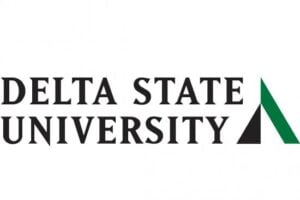
Delta State University offers the cheapest out-of-state tuition, equivalent to the tuition costs of resident students. It’s no surprise that students attending DSU represent each state and an additional 50 countries – a rarity for a regional public university. They have also made our list of the top Mississippi universities with online degree programs.
It is strongly committed to quality academics, support for the arts, and the school-wide encouragement for innovation. A four-year higher learning institution offering baccalaureate degrees spread among 42 different majors, DSU also offers several master’s and doctoral degrees in the field of education.
Delta is located in the heart of the Mississippi Delta and is one of eight publicly funded institutions of higher learning in Mississippi. It was established by the state in 1924 as the Delta State Teachers College.
Delta State’s commitment to the good of the community goes well beyond low tuition. The school opened its doors and hearts to victims of Hurricane Katrina by providing temporary housing for those displaced. DSU is also unusual in operating a 19-aircraft fleet at the local airport and on campus.
10. Alcorn State University
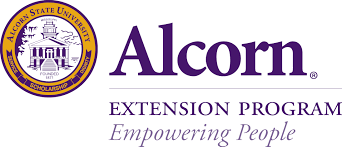
Alcorn State is one of the cheapest out-of-state tuition universities in the nation. It attracts students from all over the US and around the globe, coordinating studies abroad for students interested in those experiences.
Named for Mississippi’s governor when it was established in 1871, Alcorn State is a crucial part of education in the state. Comprised of seven schools, Alcorn State’s degree programs are available in 50 areas of study, including a nursing degree and a highly-regarded MBA program, one of the best in the Deep South.
Alcorn State was established in 1871 as a land grant university, the first black land grant college in the country. Its 1,700-acre campus is located about 80 miles from Jackson, Mississippi, and includes about 80 modern structures.
Alcorn became a co-educational university in 1895. It strives to create advantageous opportunities for each student attending the college. In addition to the main campus in Lorman, Alcorn State has additional campuses in Vicksburg and Natchez, Mississippi.
11. Chadron State College

Chadron State College’s Cost of Attendance remains almost the same for both resident students and out-of-state students ($1 more per credit hour) through the Chadron State Eagle Rate program.
As the only undergraduate and graduate degree-granting college in the western part of the state of Nebraska, Chadron State has an uncommon amount of responsibility to the people of that region. And they have lived up to that standard as one of the best online higher education institutions in Nebraska.
With one of the most affordable educational institutions in the Midwest, the Higher Learning Commission has accredited this affordable four-year school, which offers 52 degree professional programs.
The Nebraska Legislature established Chadron in 1911. It is one of three public colleges in the Nebraska State College System.
Five of the buildings on Chadron State’s small rural agricultural community campus have been acknowledged by the National Register of Historic Places. Chadron State College’s student-faculty ratio is 18:1. CSC offers scholarships at the undergraduate and graduate degree levels.
12. Peru State College
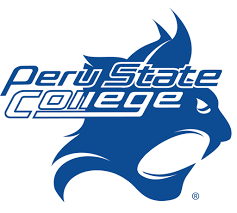
Peru State College is one of the cheapest out-of-state tuition universities due to the student-friendly One Rate, Any State tuition program. The college encourages students to apply to all available federal aid programs and scholarship options to help fund their education and career aspirations.
Peru State College’s Engagement Opportunities include an honors program, a Rural Impact Hub, a variety of internships, and Feeding 44 – a mobile food pantry created by the joint efforts of PSC, the Food Bank of Lincoln, and Catholic Social Services.
It was founded in 1865 as the first college in what was the Territory of Nebraska (though it was founded by the Methodist church, not the state).
The 100+- rural acre campus is known as the Campus of a Thousand Oaks and is located on the eastern edge of the state of Nebraska on a bluff above the Missouri River.
Peru State’s value to students is in its small size, which provides the attention and mentorship of a small liberal arts college at the price of a public institution – even for out-of-state students.
13. Central State University

Central State University’s tuition for out-of-state students is among the cheapest offered by a school of Central State’s quality. Additionally, CSU participates in a variety of federal and state loans and grants to help finance a student’s education.
The college offers scholarships based on the qualities of leadership, merit, and talent. Comprised of four departments, these include the College of Education, the College of Business, the College of Engineering, Science, Technology, and Agriculture, and the College of Humanities Arts and Social Sciences, Central State.
These play a critical role in preparing African-American students in Ohio for professional careers. Ohio’s State Legislature established CSU in 1887 as a teacher training and technical school for black students in Wilberforce – a central stopping place on the Underground Railroad named for British abolitionist William Wilberforce.
Central State is a historically black university (HBCU). Its rural campus is home to more than 2,000 students who enjoy one of the low-cost universities in the nation.
14. Granite State College
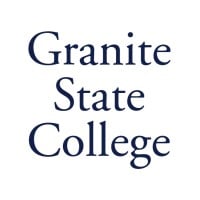
Granite State College offers some of the cheapest out-of-state tuition rates for out of state students across the United States. Created to serve as affordable college opportunities from seven suburban locations, Granite also offers much through a distance learning platform.
Additionally, the four-year college has been recognized by the US Department of Education as the #1 cheapest four-year institution of higher learning in New England, based on tuition fees.
Granite was founded in 1972 and is a member college of the University System of New Hampshire, established specifically to provide convenient college opportunities for working adults. Today, that means online learning, and GSC has become one of the foremost names in online higher education.
In 2020, US News & World Report recognized Granite State College’s online degree programs as the top college in the state to receive this acknowledgment. In 2017, Washington Monthly ranked first among New England Colleges for Adult Learners.
15. Southwest University State University

Southwest Minnesota State University offers a value far beyond just low costs. Professional studies are offered in the disciplines of Agriculture, Art, Biology, Chemistry, Economics, Finance, Global Studies, and Indigenous Nations, among others.
Southwest Minnesota offers affordable in-state tuition fees to all students attending the college. At the same time, SMSU’s Banded Tuition also allows students to pay the exact same tuition cost whether or not a student takes 12-18 credit hours each semester.
Established in 1964, it is a member of the Minnesota State Colleges and Universities System. The 215+-acre campus is located in the small city of Marshall and is home to approximately 8,700 students.
Marshall has been named one of the country’s Best Small Cities due to the fact that it is easily accessible to Minnesota’s Twin Cities, Sioux Falls, SD, and Fargo, ND. Southwest Minnesota offers students a rich community defined by support and mentorship while providing quality education at an affordable price.
16. Bemidji State University

Bemidji State University provides quality education to the northern region of the state of Minnesota. International students, out-of-state US students, and in-state Minnesotans pay the same tuition rate, one of the lowest in the nation.
More than 80% of Bemidji students receive some sort of financial aid. BSU’s most popular majors include Nursing, Business, Sciences, Psychology, criminal justice, and Education. Bemidji is tasked with educating students to find life’s inspiration.
The Minnesota State Legislature chartered Bemidji in 1919. The school is located on the shores of Lake Bemidji (“The Lake with Crossing Waters’’).
Initially, the school began as a teacher’s prep institute, but today Bemidji State is a crucial part of Minnesota’s professional workforce education. Many out-of-state and international students are drawn to Bemidji State’s unique Aquatic Biology program. Lake Bemidji’s deep waters act as an immersive student laboratory, even during the long freeze from December until May.
17. Youngstown State University

In addition to standing as one of the cheapest out-of-state tuition universities, Youngstown State University’s designated philanthropic entity, the Youngstown State University Foundation, offers scholarships and incentives to YSU students. The beneficiaries of the scholarships are as varied as the donors.
For example, the Mike and Janet Murray Scholarship is awarded to a member of the FSU women’s basketball team. There are many scholarships available through the YSU Foundation that are intended to benefit students majoring in certain fields, such as journalism or gerontology, or participating in specific extracurricular activities.
Earning one of these scholarships would lower the cost of tuition for nonresidents even further. Youngstown State’s generous scholarships are a reflection of the institution’s commitment to Ohio’s people.
YSU began as an evening education program for adults in the local YMCA, and the university remains committed to affordable adult education. For instance, the Clara J. Ross Scholarship is earmarked for a student who has been out of high school for at least seven years and plans to major in education. Youngstown State University also offers one of the most affordable criminal justice programs you can do online.
18. Nicholls State University

Nicholls State University is also one of the friendliest. Located in South Central Louisiana, the home of Cajun culture, the school prides itself on its southern hospitality and welcoming nature.
As part of its efforts to make all students feel welcome, the International Student Services works to help foreign students understand U.S. immigration regulations, taxes, culture, and more. Students from 44 foreign countries attend classes at NSU.
Nicholls has the only four-year culinary arts program in the state of Louisiana and provides 80% of the region’s nurses and teachers. It also runs the Louisiana Center for Dyslexia and Related Learning Disorders, which provides services to NSU students and the local community.
The center offers comprehensive assessments for all age groups, from children to adults, and provides support services to help students with learning disabilities. The Center also provides classes and workshops for teachers.
19. Mayville State University

Mayville State University turns students into leaders. It teaches that each and every student has the ability to make a difference in the world. In addition to its low tuition rates, MSU offers small class sizes that attract students who desire more individualized attention.
Small classes allow students to develop close friendships and experience a sense of kinship with other students in their programs, as well as make it easier for students to get help from their professors.
Mayville believes in giving every student a chance to do their absolute best. It strives to be affordable and accessible so that individuals can achieve their potential through a high-quality, leadership-focused education.
Mayville graduates are conscientious citizens who contribute their time and talents to making the world a better place – no matter where they’re from – with a degree from one of the most affordable universities.
20. West Texas A&M University
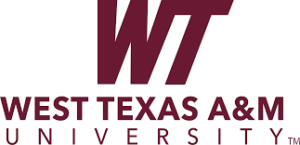
West Texas A&M University is not just about affordability. Although it’s one of the cheapest universities, its buzzwords are “innovation” and “opportunity.”
WTAMU’s research initiatives include the Athletic Training Room and Education Laboratory, the Computer Information Systems Software and Network Security Testing Lab, and the West Texas Speech and Hearing Clinic, as well as many others. The Center for the Study of the American West allows students to experience hands-on learning while minoring in Western American Studies.
Another university-run research center, the Dryland Agriculture Institute, seeks to develop improved dryland farming practices by emphasizing efficient water use, erosion control, increasing soil fertility, irrigation, and pasture and pest management.
In addition to research opportunities, students at West Texas A&M have the opportunity to participate in a variety of campus organizations, extracurricular activities, and leadership programs.
Student organizations include 1910 PR, which provides real-world PR experiences; the African Student Organization; several fraternities and sororities; and an assortment of career-based organizations, such as the American Marketing Association and the Association for Computing Machinery.
These are a small sample of the opportunities WTAMU’s students have to participate in organized activities and clubs with other students.
21. Dickinson State University

Dickinson State University has one of the cheapest out-of-state tuition rates in the nation and is found right in South Dakota. It offers a wide range of academic programs and boasts about its impressive job placement rates.
The most interesting thing about Dickinson, for history and trivia lovers, is its ties to Theodore Roosevelt, who is quoted as saying, “I have always said I never would have been President if it had not been for my experiences in North Dakota.”
Teddy Roosevelt was a man of discipline, integrity, and grit, as DSU students learn. The school’s obsession with the former president is evident through its creation of the Theodore Roosevelt Center, which strives to create a comprehensive archive of all things Teddy.
DSU also offers the Theodore Roosevelt Honors Leadership program, which seeks to teach students practical reasoning and leadership skills to succeed in a highly competitive workplace.
The work of the Theodore Roosevelt Center has inspired the creation of the Theodore Roosevelt Presidential Library Foundation, which is working toward constructing a presidential library and museum in western North Dakota.
22. New Mexico Highlands University

New Mexico Highlands University’s low out-of-state tuition rates ensure that the school is accessible to everyone, a demonstration of its core values of excellence, diversity, accessibility, and responsiveness.
The school offers more than 50 undergraduate and nearly 30 graduate programs, divided among four schools: the College of Arts and Sciences, the School of Business, Media and Technology, the School of Education, and the School of Social Work.
New Mexico Highlands offers around 50 clubs and organizations, open to all NMHU students. There is an anthropology club, an ASL club, an art club, an astronomy club, a debate club, a student leadership organization, a media arts production club, and even a disc golf club.
The literary journal, the New Mexico Review, publishes a selection of poetry, fiction, and nonfiction writing at the end of each semester. Being one of the cheapest universities also ensures that a diverse student body will bring culture and depth to NMHU student life.
23. Thomas Edison State University

Known for one of the cheapest out-of-state tuition rates, Thomas Edison State University was founded in 1972 for the purpose of providing alternative educational options for adults who want to earn a college degree.
The school continues for this purpose today, offering options such as allowing students to earn credit for relevant work experience and training. Although the TESU campus is made up of five buildings, students rarely visit the campus.
Most students take their courses online, whether from home, at work, or at the local library. Thomas Edison offers a variety of degrees at the associate’s, bachelor’s, master’s, and doctoral levels, as well as an assortment of undergraduate and graduate certificate programs.
All of their programs are created with adult students in mind, and as one of the low-cost universities, Thomas Edison is a great choice for anyone who wants to earn their degree online.
24. Harris-Stowe State University

With incredibly low tuition rates, Harris-Stowe State University was founded to provide higher education to students in the greater St. Louis region. The school offers various programs designed to meet the needs of its diverse student body.
These programs include an academic support program, community outreach, and a college-prep academy for urban youth. To accommodate older students’ needs, Harris-Stowe offers evening and Saturday courses.
At Harris-Stowe, students can earn their bachelor’s degree in 19 major areas of study. The school also offers a certificate in urban agriculture and has academic partnerships with several other institutions, which give students even more options.
For example, nursing students can attend classes at the Goldfarb School of Nursing to pursue a nursing track while majoring in biology at HSSU.
Even though Harris-Stowe’s mission is to serve students in the St. Louis area, it has one of the most affordable rates in the nation in the past decade, so it is an attractive option for out-of-state students as well.
25. Henderson State University

Henderson State University offers low tuition for over 75 graduate and undergraduate programs. The school’s programs are designed to combine a liberal arts education with professional training. The faculty is committed to excellence, and the school has a diverse body of students from all over the country and around the world.
Henderson believes that every student has the potential to become a leader and influence positive change in the world. The school has a solid foundation for helping rural and first-generation college students achieve academic success.
Henderson is working to enhance its programs to meet the requirements for new and anticipated future career opportunities and to increase the availability of experiential learning opportunities.
The school is also adding more online courses to allow access for more students. Combined with one of the low-cost rates in the country, offering more online options will make Henderson State more attractive.
26. University of Southern Mississippi

The University of Southern Mississippi is also a research-driven doctoral institution with students from all 50 states and 72 countries. Southern Miss offers study-abroad programs in about 20 different countries, including Spain, France, and Japan.
Students have access to research opportunities through the Drapeau Center for Undergraduate Research. The school’s teacher prep program for elementary teachers is ranked among the top 3% in the country by the National Council on Teacher Quality.
Southern Mississippi offers the state’s only BS in Ocean Engineering and has the only beachfront campus in the state. It is also the only Mississippi university offering a doctorate in audiology or a nurse anesthesia program.
It also offers the only certificate program anywhere for unmanned maritime systems. Its high-quality educational programs are of incredible value for non-residents and international students.
The USM Foundation provides funding for scholarships. The foundation provided more than 2,000 scholarships for Southern Miss students in 2017.
27. Midwestern State University
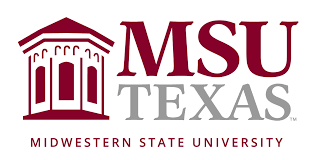
In addition to offering one of the cheapest out-of-state tuition rates, Midwestern State University offers a variety of scholarships to help students cover the cost of their schooling. The Priddy Foundation Scholars scholarship covers tuition and housing for four years for first-generation college students who meet certain requirements.
Other scholarships include the $4,00 per year Redwine Honors Scholarship and the $7,000 per year President’s Distinguished Scholarship. The scholarship page on the school’s website lists more than 60 scholarship opportunities.
To help students who struggle with food insecurity, Midwestern now offers food security scholarships and has a food pantry located on campus. The food scholarships were established by a local businessman, Pat Canan, after he became aware that food insecurity was a problem for many college students.
Students in need of food assistance complete a simple application. When approved, funds awarded from the food scholarship are applied directly to the student’s meal card.
28. Black Hills State University

With one of the lowest out-of-state tuition rates in the country, Black Hills State University is a bargain for residents and non-residents alike. At Black Hills State University, anything is possible. At least, that’s their slogan (and we tend to agree as they are one of the top online universities in South Dakota).
The school strives to create a community environment that fosters academic success and provides students with abundant opportunities for exploration. BHSU is located in Spearfish, SD, and offers outdoor adventures, art experiences, nature trails, parks, theatrical performances, music concerts, and more.
The school hosts an annual research symposium where students can show off their research projects. Black Hills is working with Sanford Lab to build an underground laboratory that will enable students to participate in a variety of research opportunities.
The planned lab will have a clean room and workspace and will be used for assaying materials with ultra-sensitive physics detectors, studying geological rock formations, and doing short-term student projects in a variety of disciplines.
Our Methodology for Ranking Low-Cost Out-of-State Tuition Universities
Ranking low-cost universities is easy – all we needed to do was research tuition costs (using IPEDS data) and rank them from lowest to highest. That’s not all it takes to understand what institutions are the best for students. You need to understand what makes them tick.
All of the colleges and universities are public (because private universities rarely charge nonresident tuition to begin with). Most of them are regional state universities dedicated to affordability and student service.

Even though their primary mission is to the people of their state and region, the nice thing about regional public universities is that they have nothing to prove: they provide excellent education, at reasonable prices, for anybody with the motivation to get their degree. HBCUs, because of their inclusive mission, are also great choices for affordability.
Whether you’re a first-generation college student coming straight out of high school, a community college transfer student ready to expand your horizons, or a new veteran returning to civilian life, low-cost universities are there for you.
What Are Cheap Out-of-State Colleges?
When understanding cheap out-of-state educational institutions, it’s crucial to note that “out-of-state” tuition only applies to public colleges and universities. Public institutions typically offer significantly higher tuition rates for students who reside outside of the state.
In contrast, private colleges and universities generally charge the same tuition rate regardless of a student’s residential status. For the purposes of this discussion, we’ll focus solely on public institutions, as these are the schools where the distinction between in-state and out-of-state fees becomes relevant.
What Constitutes Cheap College Fees?
To determine what constitutes a “cheap” out-of-state college, we’ll consider institutions with net prices lower than $15,000 per year. This threshold is set based on the following considerations:
- The average public school tuition and fees for out-of-state residents in the United States is currently $22,953.
- By selecting best value schools with net prices below $15,000, we’re targeting more affordable options than the national average.
It’s important to note that the net price includes tuition and room and board expenses, as these costs can often exceed tuition fees. To provide a comprehensive understanding, we’ll include the following information for each college:
- Cost of tuition and fees
- Cost of room and board
- Typical financial support offered to students
- Admission rates and enrollment statistics
By providing these details, you’ll gain a better understanding of the overall cost of attendance, the generosity of financial aid offered, and the size and competitiveness of the institution. It’s important to note that the schools listed will have some degree of competitiveness in their admission process.
Why Are There Cheap Colleges for Out-of-State Students?
Offering lower rates is a strategic move by these institutions to increase their viability and attract a broader range of students. Several factors contribute to the existence of cheap colleges:
- Reputation building: By offering affordable tuition, these schools can establish a reputation for being “best value” schools, caring about the financial struggles of students and promoting accessibility to higher education.
- Market competitiveness: In a highly competitive education market, less prominent schools use low prices as a way to stand out and entice students who might otherwise overlook them.
- Institutional mission: Some schools are dedicated to reducing the impact of financial concerns on those who choose to attend, regardless of their residential status. For example, Delta charges the same tuition rate for all students, stating that this policy aims to increase financial equity, reduce the impact of financial considerations on educational policy, and increase uniformity across the university.
- Attracting a diverse student body: By making their programs accessible through affordable rates, these colleges can attract a more diverse and geographically diverse student population, enriching the educational experience for all.
- Regional focus: Many schools are regional public institutions with a mission to serve the broader community, not just the residents of their state. Offering affordable tuition aligns with this mission and promotes access to education across a wider geographic area.

Why Is Out-of-State Tuition Higher?
Out-of-state tuition is higher because public colleges and universities are partially funded by tax dollars. For as long as residents have lived in the state, they have indirectly paid to fund schools through their taxes.
It makes sense to give them a discount on the tuition for those schools. This is often true of smaller regional colleges.
Most states want to encourage students to remain in their state for schooling so that they will be more likely to find employment there after graduation and remain residents of their state. The state’s economy gets a boost if more students opt to continue living there after graduating.
However, there are some educational institutions with no out-of-state tuition. So, if none of the schools in your state appeal to you, you might want to consider choosing one of the most affordable universities as an alternative.
Rates among colleges vary dramatically, and you may find that some of low-cost universities are priced competitively with the public universities in your residential state.
Can International Students Get In-State Tuition?
Many of the scholarships available are open to international students as well, resulting in the availability of in-state tuition for international students. Some also have specific scholarships only available to foreign students, meaning that the most affordable universities in the USA are also some of the cheapest colleges.
There may also be programs in the student’s home country that pay a portion of the tuition for students who attend a foreign college or university. For example, the U.K.’s Leverhulme Trust offers scholarships to students who wish to study abroad, essentially making for in-state tuition for international students.
Moving the entire family to the United States is an extreme way of getting international students in-state tuition. Forbes outlines a detailed plan to accomplish the task. It involves investing in and directing an independent film.
The special visa program used for this investment visa allows the investor to receive derivative visas for his or her spouse and children under the age of 21. It doesn’t take the cheapest educational institutions in the world, just some smart planning, to get in-state tuition for international students.
There are many affordable universities in the USA that are among the cheapest colleges, even without any scholarships. Foreign students can save a huge amount on tuition by researching the most affordable universities in the USA and choosing to attend one of those schools instead of a more expensive and prestigious university.
Who Should Enroll at Low-Cost Colleges From Another State?
Affordable rates open up different opportunities for students who may have previously thought their dream school was out of reach due to financial constraints. These cheap schools are an excellent option for a diverse range of prospective students, including:
- Students seeking quality education without the burden of excessive costs: By offering competitive tuition fees for non-residents, these institutions make it possible for students to explore degree programs beyond their home state without breaking the bank.
- Cost-conscious families looking to maximize their educational investment: With tuition being a significant expense, affordable out-of-state options can help families stretch their budgets while still providing access to reputable institutions.
- Students interested in specific academic programs not offered locally: Some specialized or niche programs may not be available at in-state institutions, making cheap schools an attractive alternative for students pursuing unique academic paths.
- Individuals seeking a fresh start or a change of scenery: Attending college in a different state can offer a transformative experience, and low-cost rates make this opportunity accessible to a broader range of students.

While cheap colleges in another state might look enticing, Jerome L. Rekart, Ph.D., who was the Vice President of Research and Insights at Southern New Hampshire University, advises to deep dive all of the expenses that you might end up paying:
“One of the biggest costs that can sneakily add up is travel to and from the out-of-state college. Can you easily and readily drive? Do you have to fly to get there? These considerations should factor into decisions about how cheap the tuition is.
One other thing to think about is the cost of living in that state. Is it more (or less) than you are currently used to? This could affect whether you have to live on campus (if a traditional student) or not.”
Factors to Consider in Choosing Schools With Cheap Out-of-State Tuition
When it comes to choosing the best schools with cheap out-of-state tuition, it’s essential to consider several factors beyond just the tuition cost. While affordability is a crucial consideration, it shouldn’t be the only factor driving your decision.
Here are some important elements to keep in mind:
- Academic programs and reputation: Check schools that offer academic program(s) you’re interested in and those programs are of high quality. Research the school’s reputation, accreditation, and rankings within your desired field of study. Consider the qualifications and expertise of the faculty members teaching in your intended program.
- Student support services: Look into the availability of academic advising, tutoring, and career services for students. Evaluate the on-campus resources, such as libraries, computer labs, and study spaces. Inquire about the support services, such as orientation programs and student organizations.
- Financial support and scholarships: Determine schools that offer additional financial aid opportunities, such as merit-based or need-based scholarships. Explore potential work-study programs or on-campus job opportunities to help offset the costs. Calculate the total cost of attendance, including tuition, fees, room and board, and other expenses.
- Campus life and community: Consider the size and location of the school and whether it aligns with your preferences, whether it would be in an urban or rural setup. Investigate the campus culture, student organizations, and extracurricular activities available. Look into the school’s safety records, housing options, and surrounding community.
- Future prospects: Research the school’s job placement rates and the success of its alumni in your desired field. Explore potential internship and networking opportunities available. Consider the reputation among employers in your chosen industry.
By considering these factors, you can make an informed decision and choose the best schools that align with your academic goals, financial situation, and personal preferences.
How Can I Find Out of State Tuition Scholarships?
Out-of-state tuition scholarships and waivers allow students to reduce their tuition costs. Waivers are usually offered to a student who meets special circumstances, such as having a parent who is a disabled veteran.
Some schools offer tuition scholarships and waivers to attract students who excel academically. For example, Kennesaw State University offers a merit-based scholarship covering up to 100% of the tuition.
These merit-based tuition scholarships are often limited to students with very high college admissions test scores and GPAs. Many universities also offer legacy scholarships. These scholarships allow in-state students whose parents graduated from the university to pay in-state rates.
Normally, this only applies to students who attend schools somewhere other than their residential state. However, residency requirements may be stricter or looser, depending on the school. Some scholarships that are large enough to cover tuition are also available to in-state students.
In most cases, the scholarship will only pay up to the actual tuition amount owed by the student, regardless of whether the student is paying in-state or out-of-state tuition. They will usually not pay for room and board, however.
In addition to scholarships and waivers, some states have reciprocity agreements with neighboring states. For example, if you live in Wisconsin, you can pay in-state rates in Minnesota and vice versa.
Some states form regional reciprocity exchanges that involve multiple states. Check with the school you’d like to attend to find out if there is a reciprocity agreement with your state.
The rules for graduate degree programs may be different. Many schools charge the same graduate tuition for in-state or out-of-state residents.

Related Questions
What Public Colleges Don’t Charge Out-of-State Tuition?
Unfortunately, there is no easy answer to this question. The list of schools that don’t charge out-of-state tuition varies by state, funding, and geographic region.
How Do You Find Colleges That Waive Out-of-State Tuition?
To waive out-of-state fees, you can move somewhere, establish residency, and hope that a college accepts you once you meet residency requirements. You may also consider applying for programs that can compensate for the fees.
What Is the Cheapest Out-of-State Tuition College?
Many public schools offer low-cost rates, with institutions like Florida Polytechnic University, Southern Louisiana University-New Orleans, and Oklahoma Panhandle State University topping the list of affordable options for non-resident students.
Are Any of the Top Sports Management Colleges on the List Also Tuition-Free?
When it comes to the best sports management colleges, one common question arises. While it varies among institutions, some elite educational institutions offer financial aid or scholarships to students pursuing sports management degrees. It’s essential to explore each college’s financial policies to find the best fit.
How Do You Finesse Out-of-State Fees?
Exploring financial aid opportunities, such as scholarships, grants, and waivers specifically designed for students, can help you pay the fees. These financial support options can help mitigate the higher costs associated with attending college as a non-resident.
What Is the Cheapest D1 College?
While specific rankings may vary, several Division 1 colleges offer affordable options, including institutions like Mississippi Valley State University. This institution provides competitive tuition rates for students and a range of certificate programs in addition to traditional degree offerings.
Conclusion
Knowing higher education institutions with cheap out-of-state fees can open doors to a wealth of college opportunities without the burden of higher tuition rates. By taking advantage of these affordable options, you can access a diverse range of academic programs and pursue your passions without financial limitations.
Related Rankings:
- 50 Universities With the Lowest Tuition Costs
- Top 10 Cheapest Online Universities
- 25 Tuition-Free Colleges
- Top 50 Universities with the Lowest Student Debt
- Top 25 Free International Universities For U.S. Students
- Top 25 Best Value Online Colleges
- Top 50 Best Value Colleges
- Top 25 Quick and Easy Online Degrees
Featured Programs
Aya Andrews
Editor-in-Chief
Aya Andrews is a passionate educator and mother of two, with a diverse background that has shaped her approach to teaching and learning. Born in Metro Manila, she now calls San Diego home and is proud to be a Filipino-American. Aya earned her Masters degree in Education from San Diego State University, where she focused on developing innovative teaching methods to engage and inspire students.
Prior to her work in education, Aya spent several years as a continuing education consultant for KPMG, where she honed her skills in project management and client relations. She brings this same level of professionalism and expertise to her work as an educator, where she is committed to helping each of her students achieve their full potential.
In addition to her work as an educator, Aya is a devoted mother who is passionate about creating a nurturing and supportive home environment for her children. She is an active member of her community, volunteering her time and resources to support local schools and organizations. Aya is also an avid traveler, and loves to explore new cultures and cuisines with her family.
With a deep commitment to education and a passion for helping others succeed, Aya is a true inspiration to those around her. Her dedication to her craft, her community, and her family is a testament to her unwavering commitment to excellence in all aspects of her life.